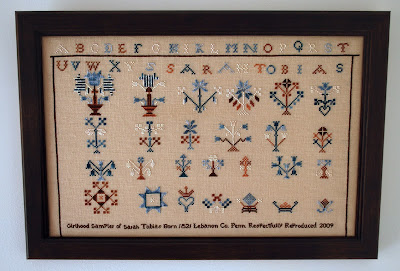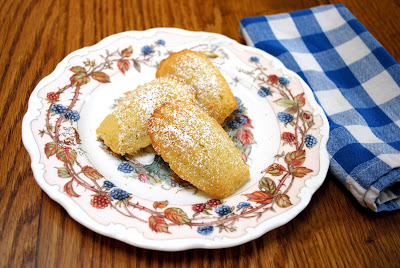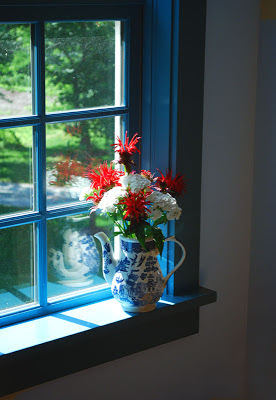At the Seashore, Real and Fictitious
I was brought up loving the seashore. Its intensity of sunshine, foamy waves of cool saltwater,
the dunes, the salt sea air in my hair, and the crying gulls of the New Jersey
shore, are marked in my memory. This is where I would visit my grandparents for
a weekend every summer of my childhood. And this is where one old Kodak slide
gives evidence of my very first taste of ice cream - in my father’s arms, in
1960.
My grandparent’s had a little yellow house on stilts. Their front yard
was sand dunes. Beyond the dunes was the Atlantic Ocean. After supper, after a
day mostly spent waist high is seawater, my mother took out a large aerosol can
and sprayed my sun-toasted arms and legs wet with mosquito repellent (not
advised today). Then, I’d wander the dunes in the cool of the evening. (These
dunes are off limits today to protect against erosion). I’d listen to the
lighthearted birds hidden and at home in the dune grass. Their clear songs
would repeat their sounding joy – a joy that matched my own.
From my grandparent’s high deck I could see the shinning sea. My grandpa
would hand me his heavy binoculars to give me a closer look at the fishing
boats that dotted the horizon. Indoors, out of the incessant wind, my
grandmother embroidered in the easy chair closest to the picture window so her
threads wouldn’t blow away. She would keep the window glass sparkling clean for
the sake of the view.
All the sensory impressions I have tucked away securely in my imagination
of the seashore (for the remainder of my life) came back to me when I read Island of the Blue Dolphins. It is a sensitive
tale of realistic fiction. If you haven’t yet read Island of the Blue Dolphins, summer would be a good time to
saunter through its pages. It isn’t a long story. I read it in four hours –
although not all in one sitting. Yet, it is a square meal that gives you a
satisfying feeling when you are done.
Off the coast of Los Angeles, California is a small rocky island, San Nicolas.
Indians had lived on the island for centuries. When writer, Scott O’Dell
learned a bit of history about the island, that a schooner carried an isolated
tribe of Indians off the island in 1835, he set out to write a story. He wrote
about this real island and the real girl who, the captain reported, jumped off
the schooner and into the sea.
In Island of the Blue Dolphins,
the schooner’s white sails had filled. The ship was already moving away.
Although the rest of her tribe urged her not to jump, twelve-year-old Karana
would not be persuaded. She screamed and broke free from the arms that held her
when she discovered her brother was not onboard. She spotted him running along
the cliff with a spear in his hands. He was only six-years-old and would be
left alone on the island for who knows how long. She must swim to shore. What
did she see when she reached him? How did she live on the Island?
Karana tells the story. She brings the nature, on this lonely little
island, to the forefront: wild dogs, “devilfish” (octopi) elephant seals, sea
otters, shellfish of various sorts (to eat), seabirds, and more. The setting is
exotic but it is Karana that we care about most. She survives isolation with
ingenuity, courage, and perseverance. Although a girl is the main character and
she retains her feminine nature, boys will like to read how Karana “roughs it”
with the loyal company of a dog. And yet in roughing it she lives life
to-the-fullest.
Island of the Blue Dolphins is
literary enough for a high school student. Anyone, junior high up to adult,
will find it a sad and beautiful story.
Dean photographed our hardcover on the Jersey shore – a couple years
back - and I, on the sofa I’m sitting on now with my laptop.
For young readers – or for reading aloud – children will find the
settings of Time of Wonder and One Morning in Maine, to be light and summery
with a bit of adventure. This time we explore the coast of Maine. The visit
will be brief but you may find yourself wanting to vacation there each summer.
I photographed Mr. McCloskey’s stories outside my parent’s seaside bungalow. They are driving inland to see us next week. Perhaps they’ll bring me another copy of their local newspaper, The Beachcomber.
I photographed Mr. McCloskey’s stories outside my parent’s seaside bungalow. They are driving inland to see us next week. Perhaps they’ll bring me another copy of their local newspaper, The Beachcomber.
The books I chose to feature are linked to Amazon.com.
Comments are welcome,
Karen Andreola


































